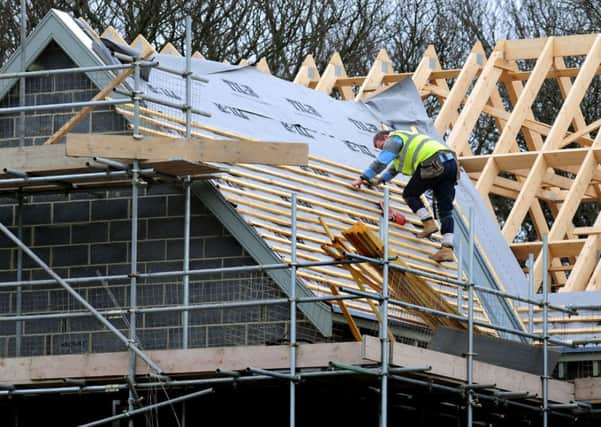Learn from housing mistakes of the past


HOUSING associations have been hard hit during the economic downturn as grants were cut for new affordable housing, and revenues reduced as a result of Welfare Reform. Some would argue that subsidy dependency has been the housing association’s Achilles heel, but now it seems the entire housing market is subsidised.
With financial incentives aimed at kick-starting a market that fewer and fewer people can afford to be part of, it seems we have not learnt much from the past and perhaps the time has come to look at housing in a very different way.
Advertisement
Hide AdAdvertisement
Hide AdNew house building stopped in its tracks when house prices started to fall in 2007. We are now seeing a market recovery, which means house prices are increasing and land values are on the rise. Incomes, however, are not going up, yet we are pinning our hopes of recovery on increasing values, and on a development industry which is still built on credit to fuel sales.
The upturn in the market is partially fuelled by the government’s Help to Buy initiative which, by plugging the affordability gap with interest-free credit, is having the opposite effect of making homes more affordable. In Scotland, Help to Buy aims to stimulate demand through an interest-free loan for up to 20 years to cover mortgage deposits. The capacity of the system to deliver houses is incremental and although providing subsidies for buyers stimulates demand, available housing stock is down and prices rise. Such schemes inflate the market but need to be carefully withdrawn.
Other market intervention models include NHT which is designed to stimulate market supply by encouraging developers to build, but relies on house price inflation to make the model workable. NHT supports the development of new homes to rent but is based on their eventual sale which results in a loss to the affordable rented sector. South of the border the Build to Rent fund offers development finance to build market rent properties. After five years developers need to refinance the project.
Whatever way you look at it, every tenure is now publicly subsidised by either supply or demand measures. The problem is all of these are short term and we need to consider how we create long-term economic growth and affordability. There is plenty of rhetoric around the detail of planning, standards and affordability and various market reports, from the RICS and others have lots of suggestions on how to stimulate the market, but lack coherence.
The fact is we are not building enough homes, and never have. We need to understand the role different tenures can play in an affordable market, and we need a construction industry focused on long-term investment and continuity, with an economy which allows that to happen.
Places for People is committed across a range of subsidised tenures. In total we have a five-year plan for 2000 homes across all tenures in Scotland. Castle Rock Edinvar, the Places for People Housing Association subsidiary, has set out a vision for a thousand new homes for Edinburgh using a funding mechanism that minimises subsidy. By entering into framework agreements with contractors it gives them more predictability and allows the construction industry to provide jobs and training, boosting local economies.
By setting out clear objectives around levels of supply, relationships between supply and demand, homes people can afford, choice of tenure and development-industry support for jobs, we could avoid knee-jerk interventions which served our boom and bust market so well in the past. So, if the challenge facing government is to build with less subsidy, the question is, how do you wean the subsidy junkies off what’s available? Clearly it would be foolish to go cold turkey, but it is time to explore new ways to balance the market so the industry contributes positively to the economy and homes are affordable. We need to ensure we are building enough homes, not just in the short term, but over a longer-term period and that we nurture the construction industry to deliver. Interventions can then be targeted on the supply side to ensure production levels are sustained and on the demand side to ensure housing is affordable. By repeating past mistakes we are not likely to create a bright new future.
• Alister Steel is Managing Director, Castle Rock Edinvar Housing Association
SEE ALSO